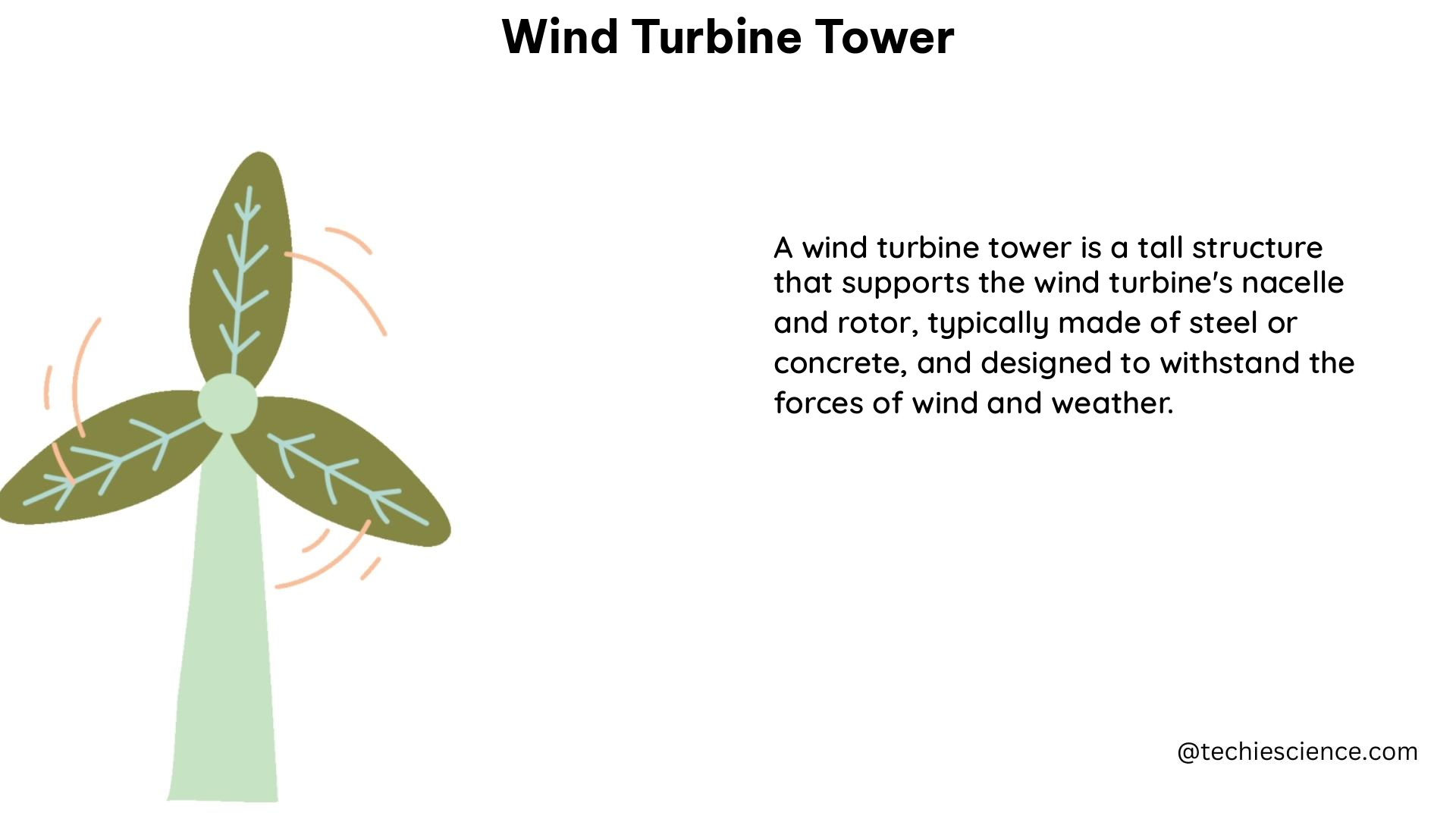Wind turbine towers, also known as anemometry towers or meteorological evaluation towers (MET), are the backbone of the wind energy industry. These towering structures play a crucial role in assessing the potential of a site for wind energy production by collecting vital wind data, including wind speed and direction at different heights.
Understanding the Importance of Wind Turbine Tower Height
The height of wind turbine towers can vary significantly depending on the project requirements. Taller towers provide more accurate wind data, as they are able to measure atmospheric conditions and winds at higher elevations. For instance, the 135-meter turbine inflow research towers at NREL’s Flatirons Campus are designed to measure the wind characteristics that flow into the site, helping researchers determine the best locations for wind power plants and assess the wind resource potential for specific areas.
| Tower Height | Advantages |
|---|---|
| 80-100 meters | Suitable for small-scale wind turbines, providing reliable wind data at the turbine hub height. |
| 100-150 meters | Ideal for utility-scale wind turbines, capturing wind data at higher altitudes for more accurate assessments. |
| 150-200 meters | Optimal for large-scale wind farms, offering comprehensive wind data at greater heights to maximize energy production. |
The choice of tower height is a critical decision that directly impacts the accuracy of wind data and the overall viability of a wind energy project. Taller towers can provide a more comprehensive understanding of the wind resource, but they also come with increased construction and maintenance costs.
Equipping Wind Turbine Towers with Measurement Instruments

Wind measurement towers are typically equipped with a variety of instruments to collect essential data. The most common instruments include:
- Anemometers: These devices measure wind speed at different heights along the tower, providing crucial information about the wind resource.
- Wind Vanes: These instruments measure the direction of the wind, allowing for the optimization of turbine orientation and layout.
- Barometers: Barometers measure atmospheric pressure, which can affect wind patterns and energy production.
- Thermometers: Temperature measurements help researchers understand the impact of ambient conditions on wind turbine performance.
- Data Loggers: These electronic devices record and store the data collected by the various instruments, enabling comprehensive analysis and reporting.
The placement and calibration of these instruments are critical to ensure the accuracy and reliability of the collected data. Proper maintenance and regular calibration are also essential to maintain the integrity of the wind data.
Navigating the Technical Specifications and Regulatory Landscape
Wind turbine towers must meet a range of technical specifications and regulatory requirements to ensure their safe and effective operation. These include:
Environmental Considerations
- Compliance with local and national environmental regulations
- Conducting comprehensive environmental impact assessments
- Obtaining necessary permits and approvals from relevant authorities
Structural Integrity
- Designing towers to withstand extreme weather conditions, including high winds, heavy snowfall, and seismic activity
- Ensuring the structural stability and load-bearing capacity of the tower
- Implementing appropriate corrosion protection measures
Electrical and Safety Systems
- Integrating lightning protection systems to safeguard the tower and its equipment
- Implementing robust grounding and earthing systems to mitigate electrical hazards
- Adhering to national and international electrical safety standards
Monitoring and Data Management
- Establishing reliable data collection and storage protocols
- Implementing quality control and data validation procedures
- Ensuring secure and efficient data transmission and analysis
Navigating these technical specifications and regulatory requirements is crucial for the successful deployment and operation of wind turbine towers. Collaboration with experienced engineering firms, regulatory bodies, and industry experts is often necessary to ensure compliance and optimize the performance of these critical infrastructure components.
Maximizing the Potential of Wind Turbine Towers
To fully harness the power of wind turbine towers, it is essential to adopt a comprehensive approach that encompasses data collection, analysis, and decision-making. This includes:
- Comprehensive Site Assessments: Conducting thorough site evaluations to identify the most suitable locations for wind turbine towers, taking into account factors such as wind patterns, terrain, and environmental conditions.
- Advanced Data Analytics: Leveraging sophisticated data analysis techniques, including machine learning and predictive modeling, to extract valuable insights from the wind data collected by the towers.
- Integrated Wind Farm Design: Utilizing the wind data to optimize the layout and configuration of wind turbines within a wind farm, maximizing energy production and minimizing operational challenges.
- Continuous Monitoring and Optimization: Implementing real-time monitoring systems to track the performance of wind turbine towers and the overall wind farm, enabling timely adjustments and improvements.
By embracing these strategies, wind energy developers and operators can unlock the full potential of wind turbine towers, driving the growth and efficiency of the renewable energy sector.
Conclusion
Wind turbine towers are the unsung heroes of the wind energy industry, providing the critical data and insights needed to harness the power of the wind. From understanding the importance of tower height to navigating the technical and regulatory landscape, this comprehensive guide has explored the key aspects of these towering structures.
By leveraging the latest technologies, data analytics, and industry best practices, wind energy professionals can maximize the potential of wind turbine towers, paving the way for a more sustainable and resilient energy future.
References:
- Renewable Energy: How Wind Measurement Towers are Boosting the Industry
- NREL Wind Data and Tools
- Meteorological Evaluation Towers (MET) for Bioenergy

The lambdageeks.com Core SME Team is a group of experienced subject matter experts from diverse scientific and technical fields including Physics, Chemistry, Technology,Electronics & Electrical Engineering, Automotive, Mechanical Engineering. Our team collaborates to create high-quality, well-researched articles on a wide range of science and technology topics for the lambdageeks.com website.
All Our Senior SME are having more than 7 Years of experience in the respective fields . They are either Working Industry Professionals or assocaited With different Universities. Refer Our Authors Page to get to know About our Core SMEs.